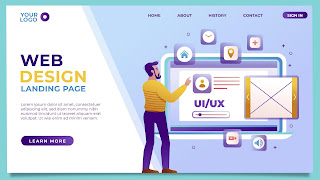Graphic design elements
Graphic design is the art of visual communication through the use of typography, imagery, color, and other design elements. Here are some of the fundamental elements of graphic design:
1. Typography: Typography refers to the style, arrangement, and appearance of text. It includes typefaces, font sizes, and line spacing. Good typography helps to create a clear and legible message.
2. Color: Color is a powerful tool in graphic design, as it evokes emotions and sets the tone for a design. Color can be used to create contrast, draw attention to certain elements, and convey a particular mood.
3. Imagery: Imagery includes photographs, illustrations, and other graphics. It can be used to complement text, add visual interest, and provide a focal point for a design.
4. Balance: Balance refers to the distribution of visual weight in a design. A balanced design has a harmonious arrangement of elements, whereas an unbalanced design can feel chaotic or cluttered.
5. Contrast: Contrast refers to the differences between elements in a design, such as between light and dark, large and small, or warm and cool colors. Good contrast helps to draw attention to important elements and create visual interest.
6. Proximity: Proximity refers to the placement of elements in relation to each other. Grouping related elements together can help to create a sense of hierarchy and organization in a design.
7. Repetition: Repetition refers to the use of repeated elements, such as patterns or colors, throughout a design. Repetition can help to create a cohesive look and feel and reinforce a brand identity.
These are just a few of the elements of graphic design. To become a skilled graphic designer, it's important to study these elements and understand how to use them to create effective designs
Typography in graphic design
Typography is an essential aspect of graphic design and plays a crucial role in the visual communication of a message. Here are some key elements of typography in graphic design:
1. Typefaces: A typeface is a set of characters (letters, numbers, punctuation marks, etc.) that have a similar design. There are many different types of typefaces, including serif, sans-serif, display, and handwriting.
2. Fonts: A font is a specific variation of a typeface, such as bold or italic. A typeface can have many different fonts.
3. Font sizes: Font size refers to the height of the letters in a font. It's important to choose an appropriate font size to ensure that the text is legible and easy to read.
4. Line spacing: Line spacing refers to the distance between lines of text. Increasing the line spacing can make text easier to read, whereas decreasing it can create a more compact look.
5. Kerning: Kerning refers to the spacing between individual letters in a word. It's important to adjust the kerning to create a harmonious and aesthetically pleasing appearance.
6. Alignment: Alignment refers to the way text is aligned on the page. Common alignments include left, right, center, and justified.
7. Hierarchy: Hierarchy refers to the arrangement of text in order of importance. This can be achieved through the use of font sizes, colors, and other typographical elements to create visual interest and draw the eye to important information.
By understanding and applying these elements of typography, graphic designers can create effective and impactful designs that clearly communicate their intended message.
About Proximity in graphic design
Proximity in graphic design refers to the placement of elements in relation to each other. It's a way to create visual relationships between elements and to organize information in a clear and aesthetically pleasing manner.
1. Grouping: Grouping related elements together creates a visual connection between them and helps to clarify the relationship between those elements. For example, a header and its corresponding body text should be grouped together.
2. Spacing: The spacing between elements also affects proximity. For example, increasing the space between two elements can create a sense of separation and hierarchy, while decreasing the space can create a sense of unity.
3. Unity: By using proximity, designers can create a sense of unity in a design. Elements that are positioned close together appear to be related, while elements that are positioned far apart appear to be separate.
4. Hierarchy: Proximity can also be used to create hierarchy in a design. Elements that are positioned close together and grouped together are perceived as more important than elements that are spaced further apart.
5. Readability: Proximity can also affect the readability of a design. For example, text that is tightly packed together can be difficult to read, whereas text that is spaced out more generously is easier on the eyes.
Overall, proximity is a powerful tool in graphic design that can help to create a cohesive and organized design that effectively communicates its intended message. By carefully considering the placement and grouping of elements, designers can create designs that are both aesthetically pleasing and easy to understand.





No comments:
Post a Comment